Harvesting asparagus is a bit different than harvesting other types of vegetables. Asparagus doesn’t have a clear “ripe” stage like many other vegetables; it’s a harvest based more on vegetable size and timing. As a perennial plant that lives all season, asparagus requires time and management to remain strong and productive. The right way to harvest asparagus also changes depending on the age of the plants.
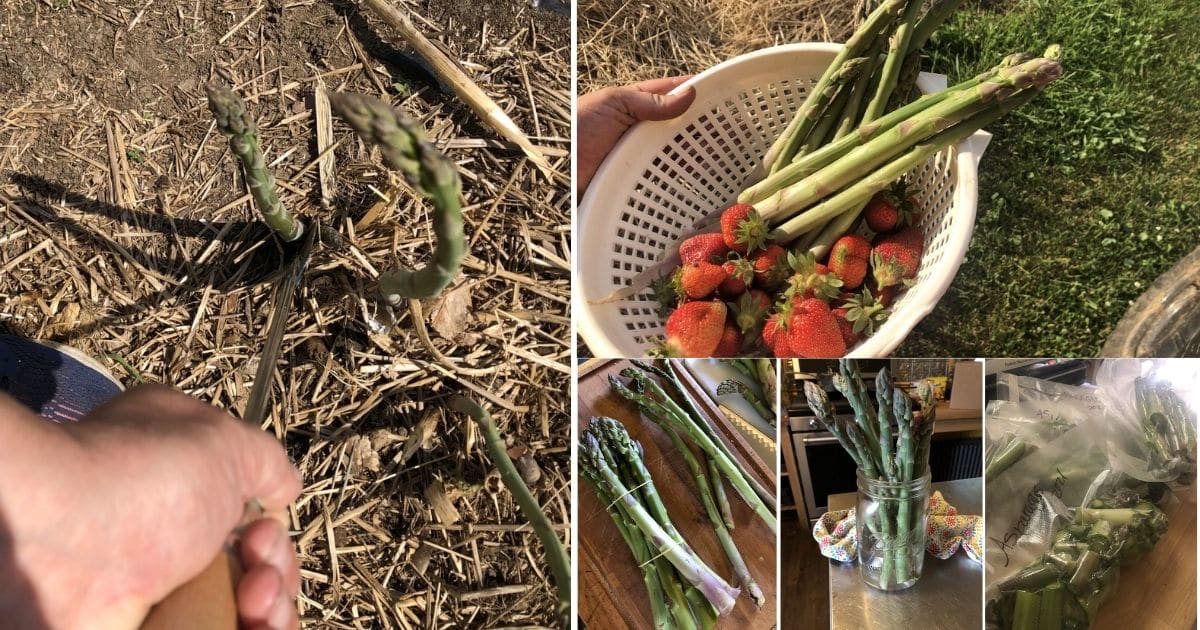
Sound like a lot to take in? Perhaps at first, but with this guide to harvesting asparagus, you’ll have all you need to know from the first harvest through the life of your asparagus bed.
Jump to:
- When Can I Start Picking from My New Asparagus Bed?
- How Much and How Long to Harvest Based on the Age of Your Asparagus Bed
- How Often Should I Pick My Asparagus?
- The Best Time of Day to Cut Asparagus
- How Do I Know When My Asparagus is Ready to Pick?
- How to Pick Asparagus
- How Much Asparagus Should I Expect to Harvest from My Asparagus Bed?
- When Should I Stop Cutting My Asparagus?
- How Should I Store My Cut Asparagus for Fresh Use?
- How To Use Fresh Asparagus
- Can Asparagus Be Preserved for Eating Out of Season?
When Can I Start Picking from My New Asparagus Bed?
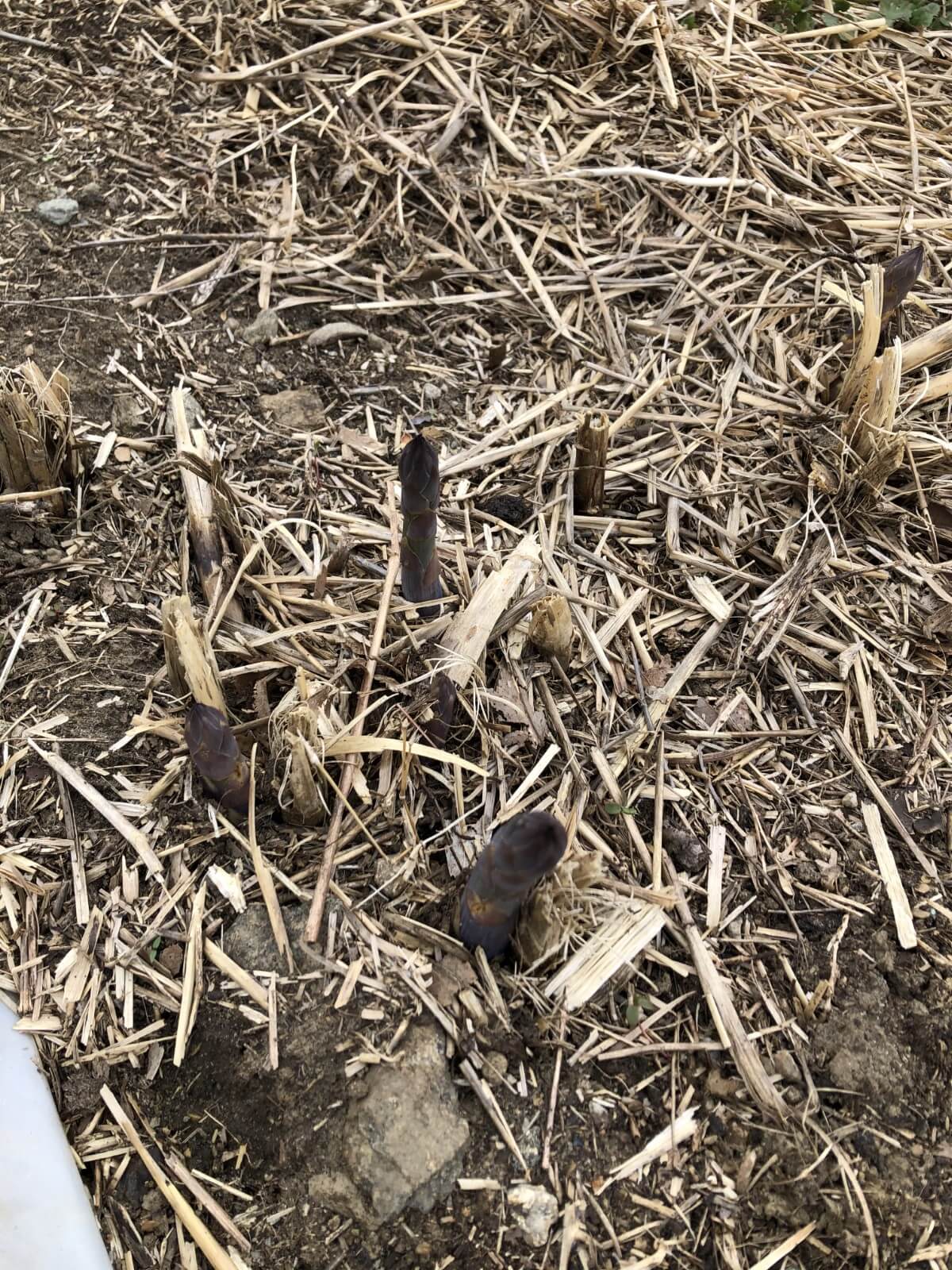
The first thing to know about picking asparagus is when you can start harvesting from your asparagus bed—in this instance, in terms of how old the actual bed is and how many years it has been in the ground. If you have taken over an established bed that has been growing for a number of years, you do not need to worry about this, but this is important information if your bed is new (planted anytime within the last two or three years.
The following guidelines will help you to determine when you should start harvesting your asparagus as it relates to the age of your bed. It is helpful if you know if the bed was started from seed or from crowns, and if those crowns were one or two (or more) years old when planted.
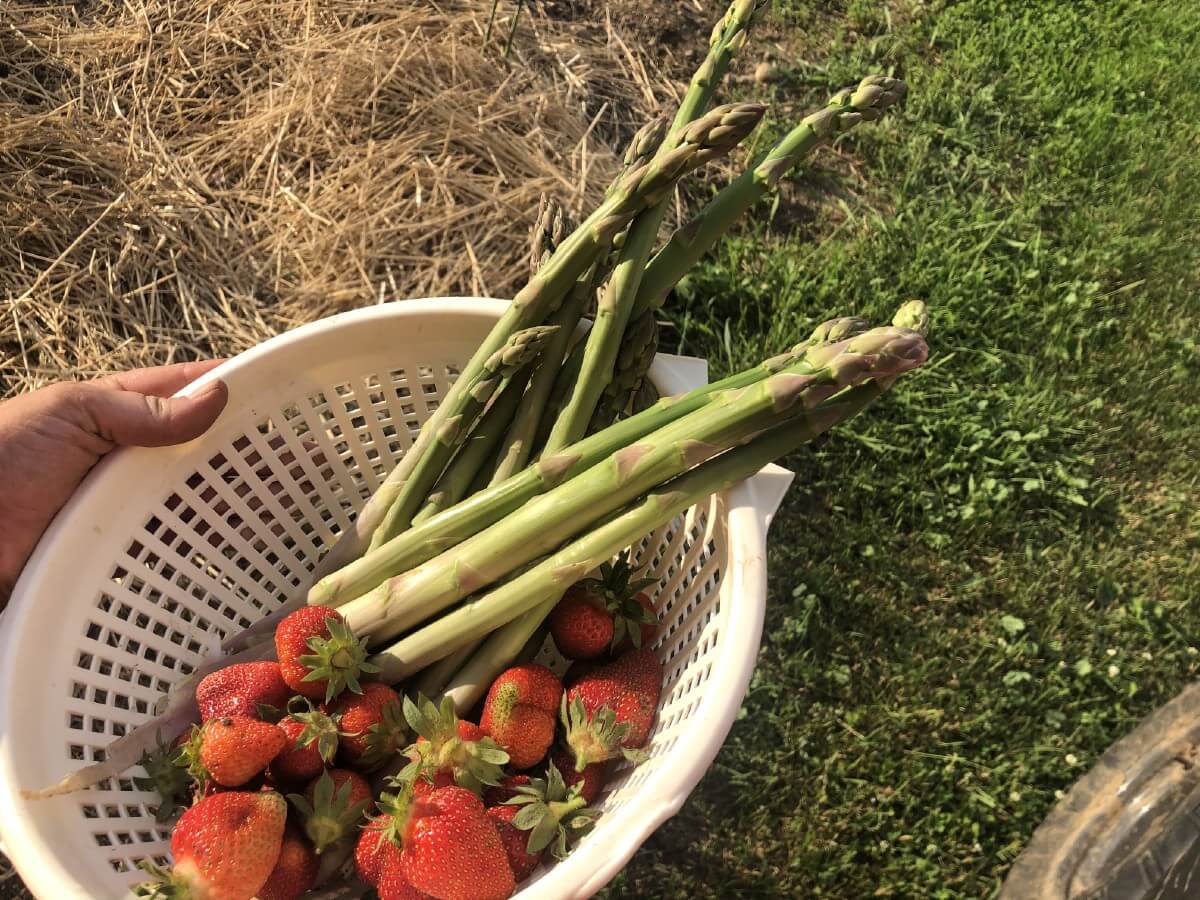
If you’re unsure or do not have that information, err on the side of caution and follow the guidelines for a two-year-old bed.
- Year of planting: No harvest. Your asparagus plants need this year to establish and grow without any cutting
- Bed started from seed: Do not harvest until the bed is at least three years old
- Bed started from one-year-old crowns: Do not harvest until the bed is in its third year (two years after planting)
- Bed started from two-year-old crowns: May begin light harvest in second year (year after planting) IF plants seem well-established and are sending up several sizable shoots
- Do not harvest from any bed until the spears are at least larger than ⅜ inch in diameter
- If in doubt, wait an additional year
How Much and How Long to Harvest Based on the Age of Your Asparagus Bed

You should not harvest heavily in the first couple of years of picking from your asparagus bed. It takes up to three years to get up to full harvest level. This ensures that plenty of energy is going into the asparagus plants to grow the root crowns, which will result in much larger plants and much larger harvests over the life of your patch.
Once you start harvesting, follow these guidelines for the length of harvest. Note that if the bed is established (such as an existing bed on a property you have purchased, for example), skip ahead to the guidelines for a bed three years or older.
- Harvest year one: Take only a light harvest for a period of 7 to 10 days
- Harvest year two: Harvest a modest harvest for a period of about two weeks
- Harvest year three and beyond: Harvest for a period of 6 to 8 weeks—see following information to know how much and how long you can harvest, and learn the signs of when to stop cutting your asparagus
How Often Should I Pick My Asparagus?
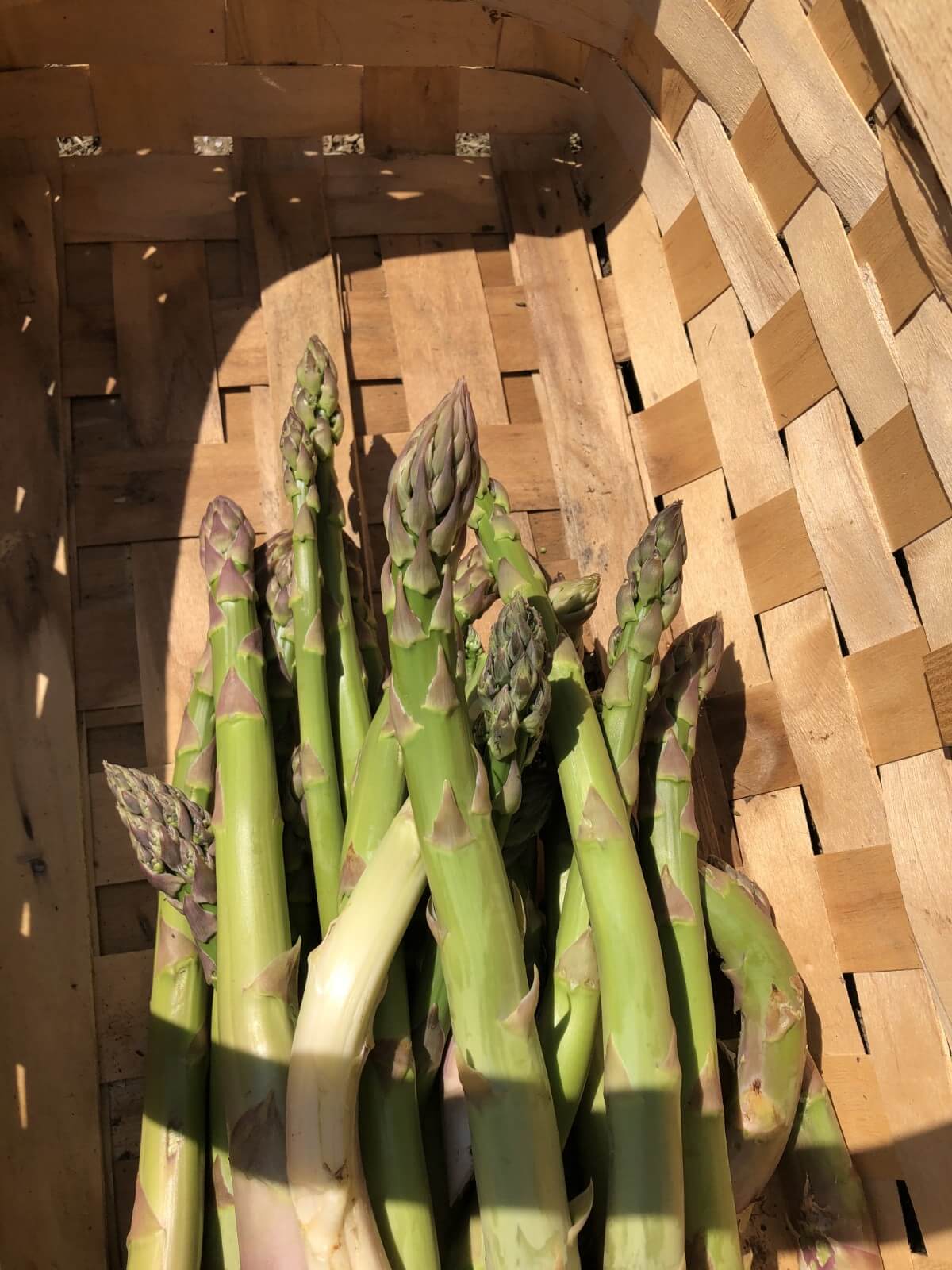
Asparagus grows amazingly fast when the conditions are right. While it might be a little slow to start in the cooler days at the beginning of the season, as temperatures warm, on some days it will almost feel as if you can watch those spears grow!
It is best to harvest your asparagus at least every other day, with a routine of checking the patch daily. The warmer the weather, the faster the spears grow, so while every other day may be adequate in the beginning of the asparagus season, in the mid and late season you should plan to pick your asparagus every day.
The Best Time of Day to Cut Asparagus
The best time of day to pick your asparagus is in the morning when temperatures are cooler and before they have soaked in the heat and stress of the day’s sun. This will give you crisper spears that store a little better. If possible, it’s a great idea to make a daily routine of checking the asparagus patch every morning as you start your day and cutting any spears that are ready. That’s a perfect world scenario, though.
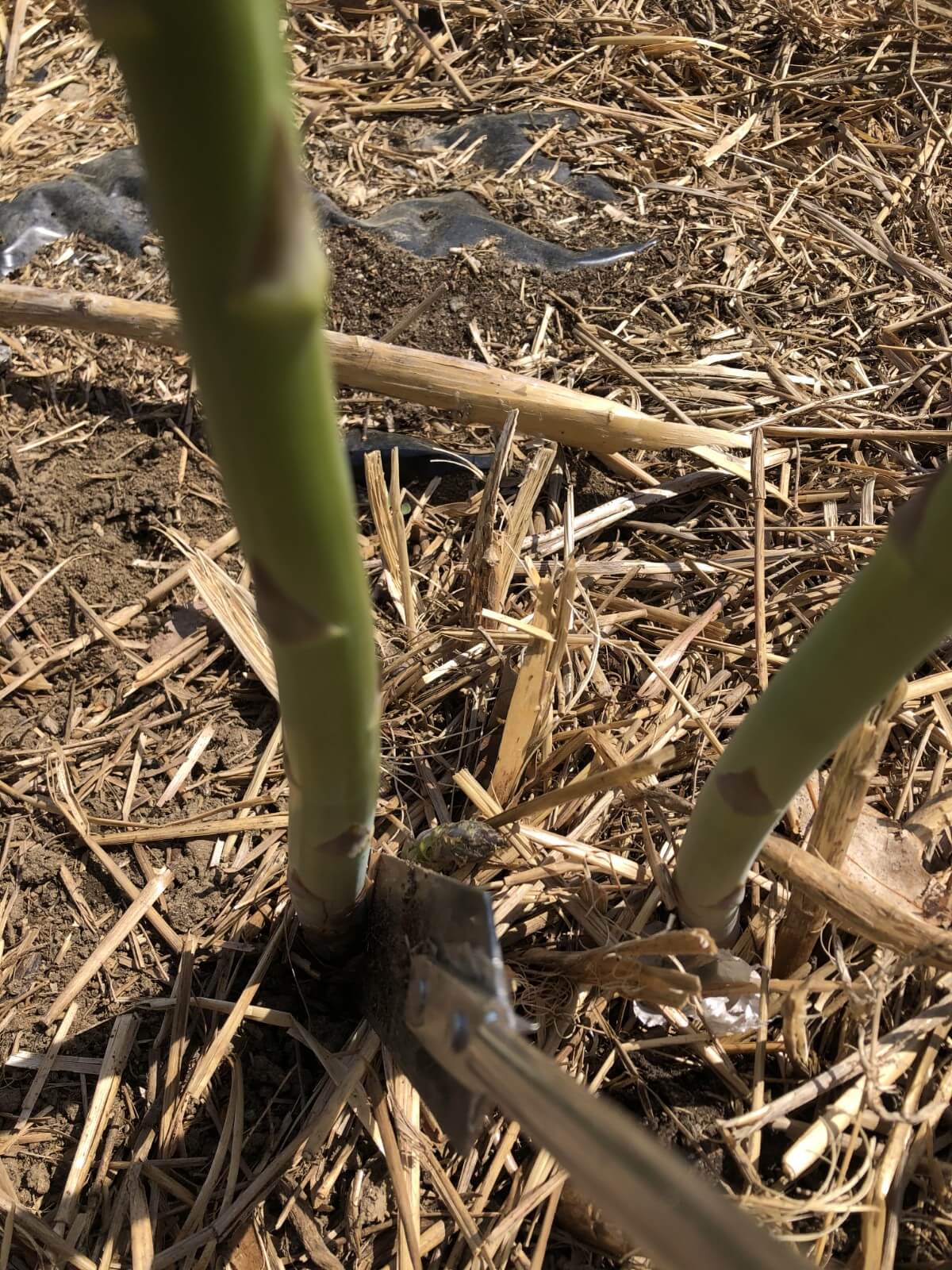
In reality, the best time of day to harvest asparagus is the time that you have to cut it—meaning that, while morning might be best “by the book”, in real life you may not have that option given the demands of work and school schedules. If morning is not possible, the cool of the evening is a good second choice. And if neither of those work, just aim for about the same time each day. It’s more important to establish a daily harvest habit than to worry about doing everything by the book.
How Do I Know When My Asparagus is Ready to Pick?
Asparagus is not like other plants in that you do not need to wait for it to come to just the right level of ripeness. Essentially, asparagus is always “ripe,” so there’s little worry about cutting it too early. The only thing you could lose by cutting asparagus too soon is size and yield. However, it is better to cut it on the younger side than to let it get too big or too old—this is when the spears turn fibrous and woody, the heads begin to open, and the quality is lower. Such spears are better off left to grow to size and fern out to feed the plant rather than being picked and wasted.
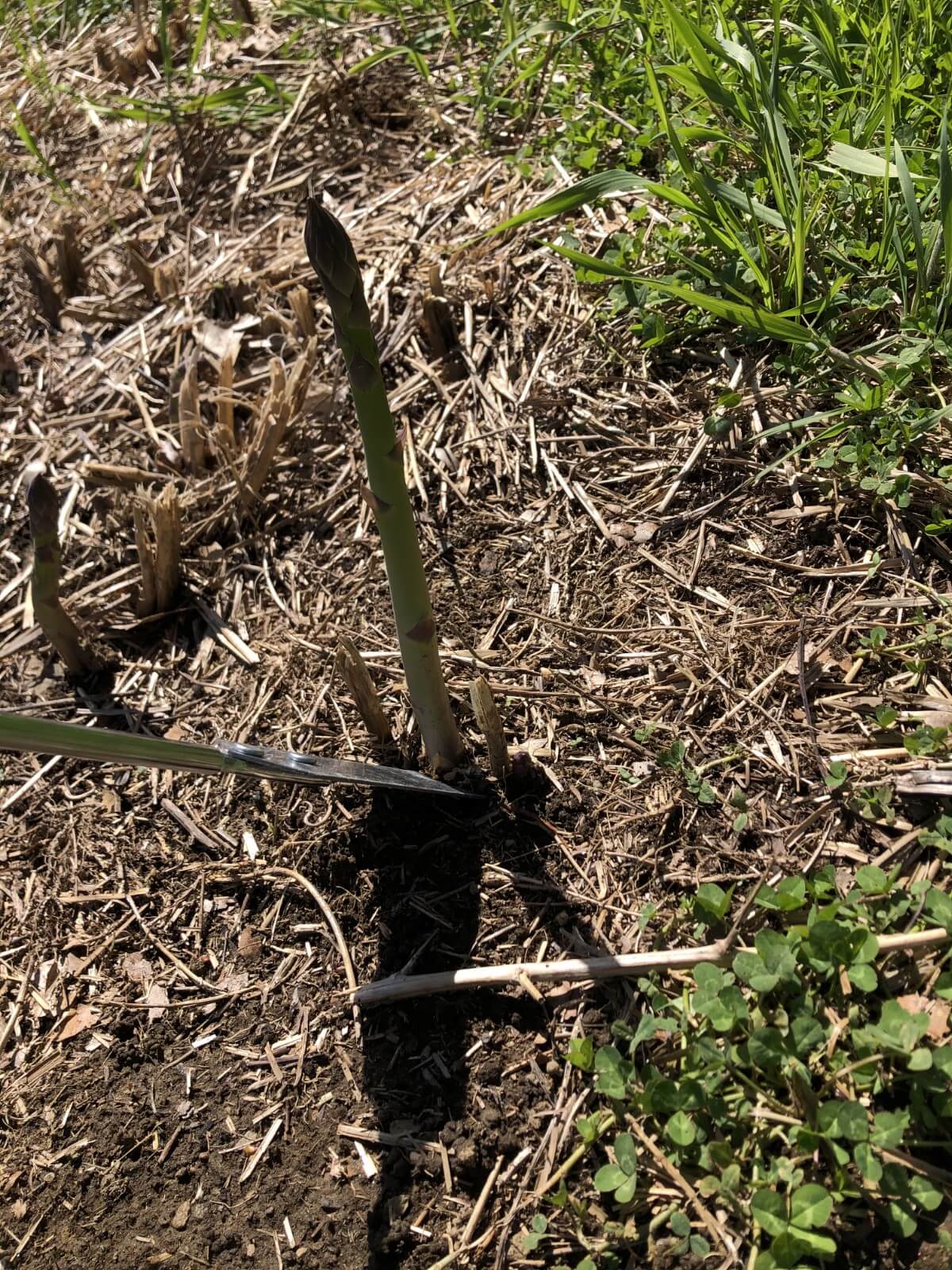
Asparagus is ready to pick when:
- Spears are about 6 to 8 inches tall
- Spears are larger in diameter than ⅜ inch
- Tips (heads) are still tightly formed.
Make sure that there are at least two more buds coming up from the plant when you cut your spears
The timing of the season varies by location. Generally speaking, the season runs from mid-April or early May to the end of June. However, more southerly climates will experience an earlier season. Also, the weather and climate in any year may shorten or extend the season. Cooler weather will slow production while warmer than normal temperatures may bring an early end to harvests.
How to Pick Asparagus
There are two accepted ways to pick asparagus.
Cut asparagus with a sharp knife or asparagus knife just below the soil level. Do not leave a stump or stub above the ground. Cut at a close angle to the spear to avoid cutting into and damaging other developing spears. It is best to keep a dedicated knife for the job or to buy an asparagus knife that is made for the job (and which makes it easier to make clean cuts). Keep your asparagus tool clean to limit disease and pathogens.
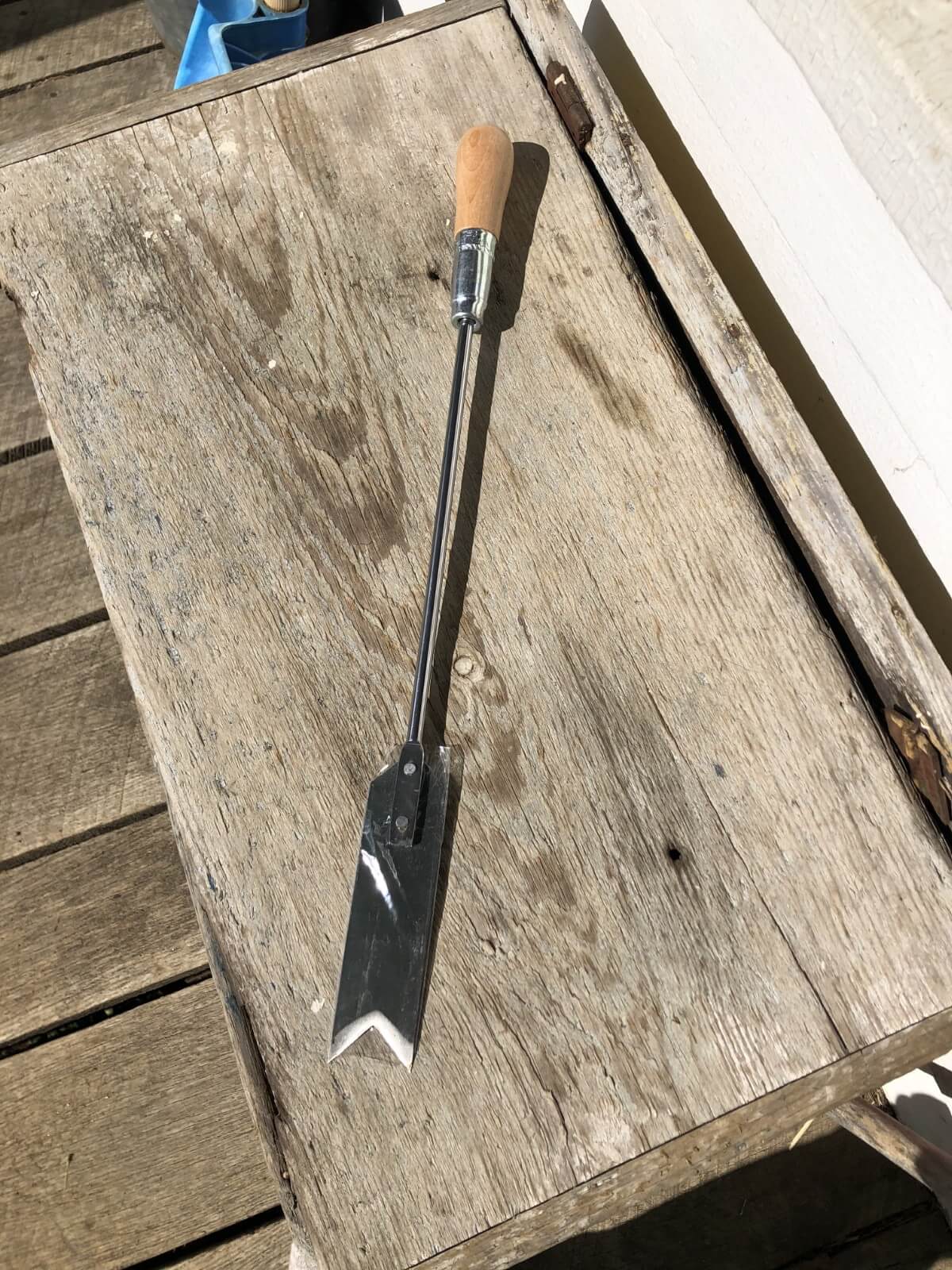
You may also harvest asparagus by handpicking. Bend the spear sharply and snap it off at the soil line. Asparagus will have a point where it naturally wants to snap off; this will be where the woodier, less edible bottom stalk ends and the edible stalk begins. Take care to break the spear off rather than pull it. The spear should snap cleanly off without repeated bending and tugging.
Is Hand-Picking or Cutting Better When Harvesting Asparagus?
The benefit of hand-picking asparagus is that you have spears with no fibrous, woody ends and so the entire stalk will be edible without further loss as long as it is used or preserved before too long. Also, there is less risk of damaging emerging buds and spears. The potential for spreading disease from plant to plant is less than it is when using a knife that moves amongst the plants.
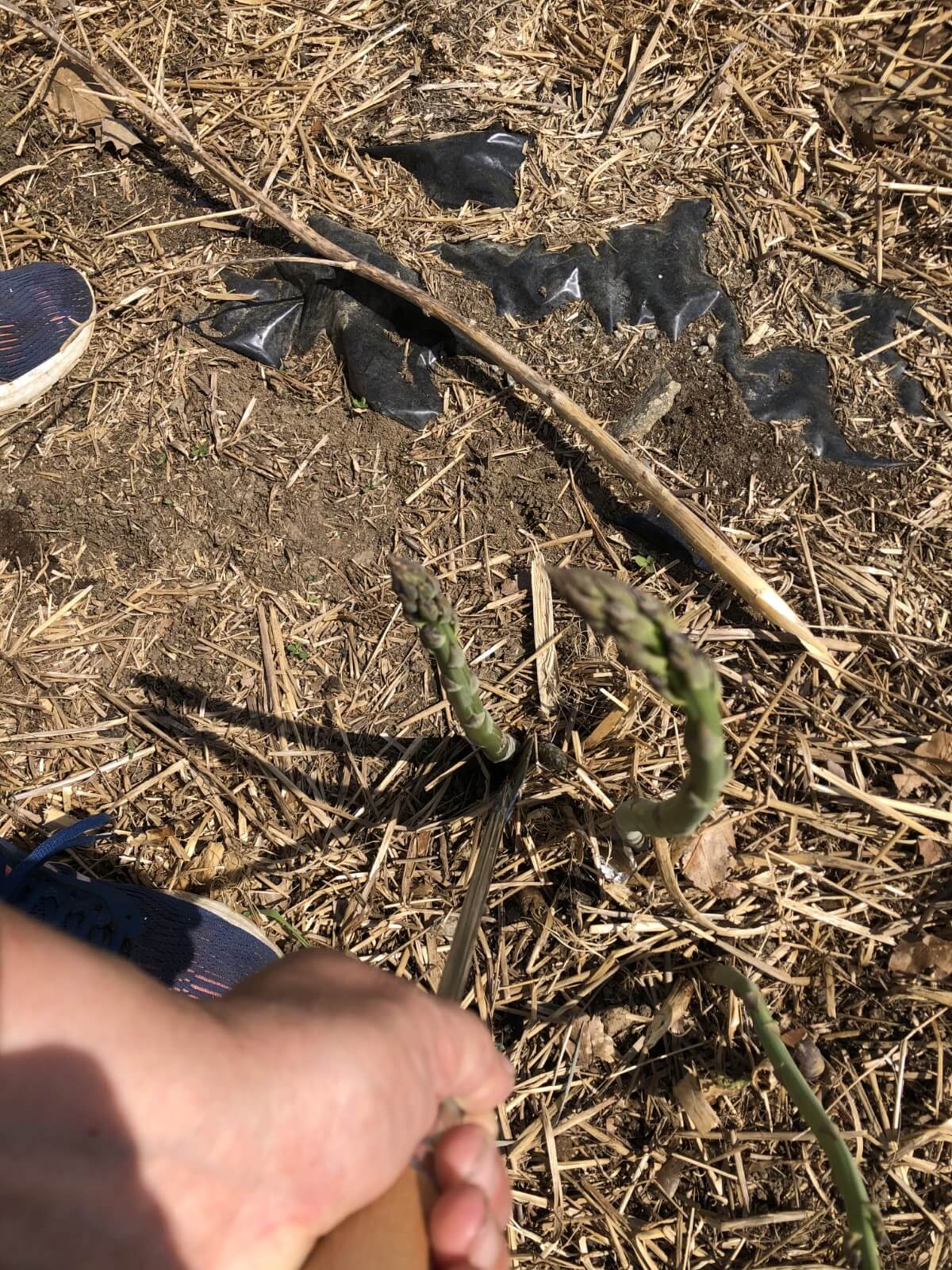
The downside to handpicking is that sometimes stalks do not break cleanly and you can end up pulling up from deep in the ground and risk damage to the crown and leaving open holes that may invite disease. Stalks do not always break at the soil level as desired, either. This often results in stubs, which is not recommended and can result in spears of less uniform length, sometimes much shorter than you’d anticipated. An Asparagus knife, on the other hand, ensures a clean cut and spears of a more uniform length.
If you find it difficult to snap spears off cleanly without pulling and tugging, it is best to harvest using a knife or asparagus tool.
How Much Asparagus Should I Expect to Harvest from My Asparagus Bed?
On average, a well-established asparagus patch will yield around 20 spears per plant per season. This is equal to about one-half pound (though the yield by the pound may be higher from larger cultivars such as the Jersey Giant varieties). If you planted the recommended 6 to 12 plants per person, for a household of four the total harvest will be 12 to 24 pounds of asparagus every year!
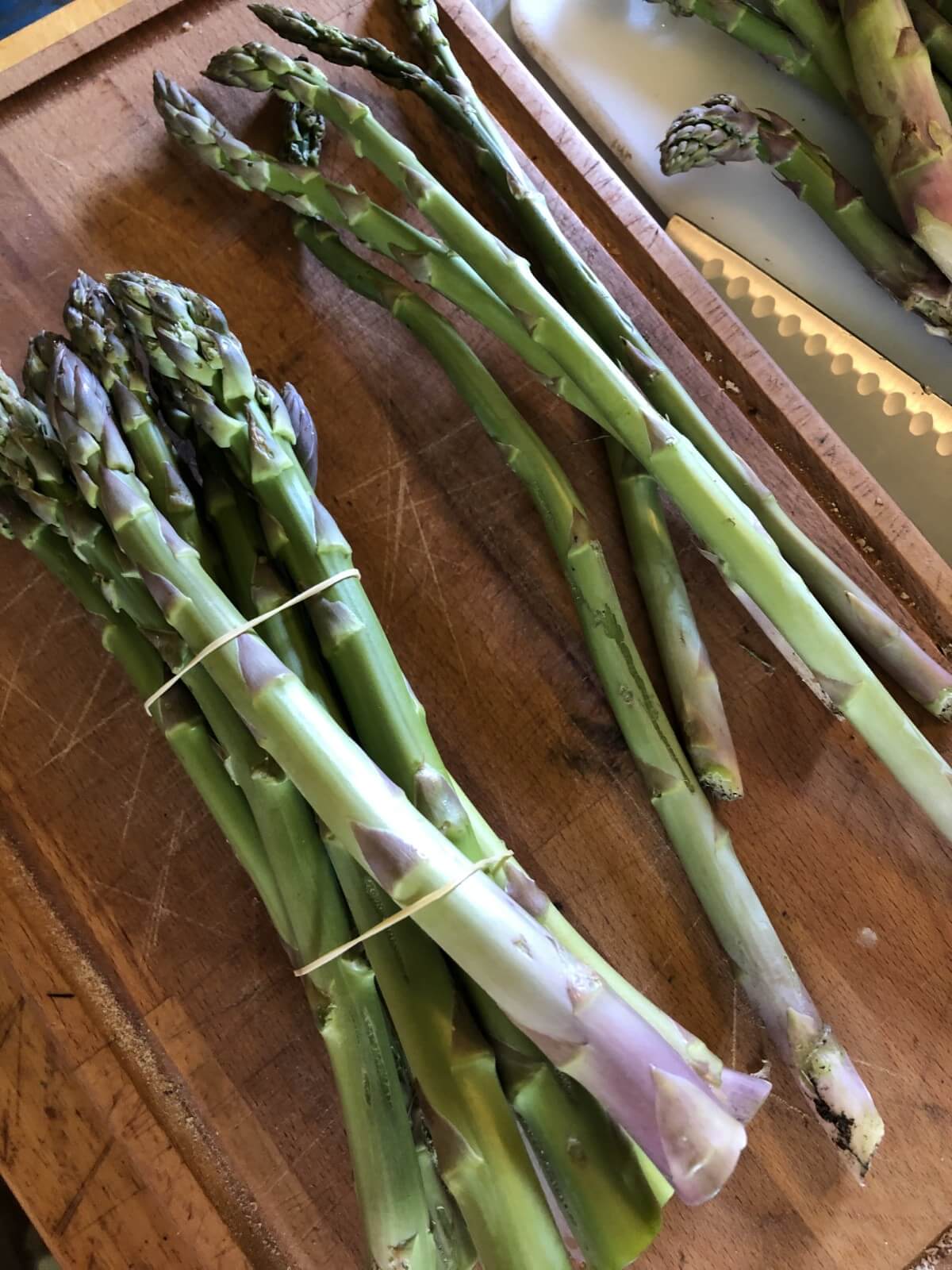
Yields will be less in the first year or two while the bed is becoming established since you will be harvesting less and for a shorter amount of time. From year three forward, however, you should easily be able to hit one-half pound per plant as long as the bed is fertilized annually and well-maintained.
When Should I Stop Cutting My Asparagus?
One of the most important things to know about managing an asparagus patch is that some of the young spears need to be left to grow into full fern-like plants. After you harvest your patch for the 6 to 8 weeks of summer, leave at least two spears per plant to grow to full size. These do not get picked. These full-sized plants are needed to feed the crowns and the plant throughout the summer months—this is what keeps your bed alive.
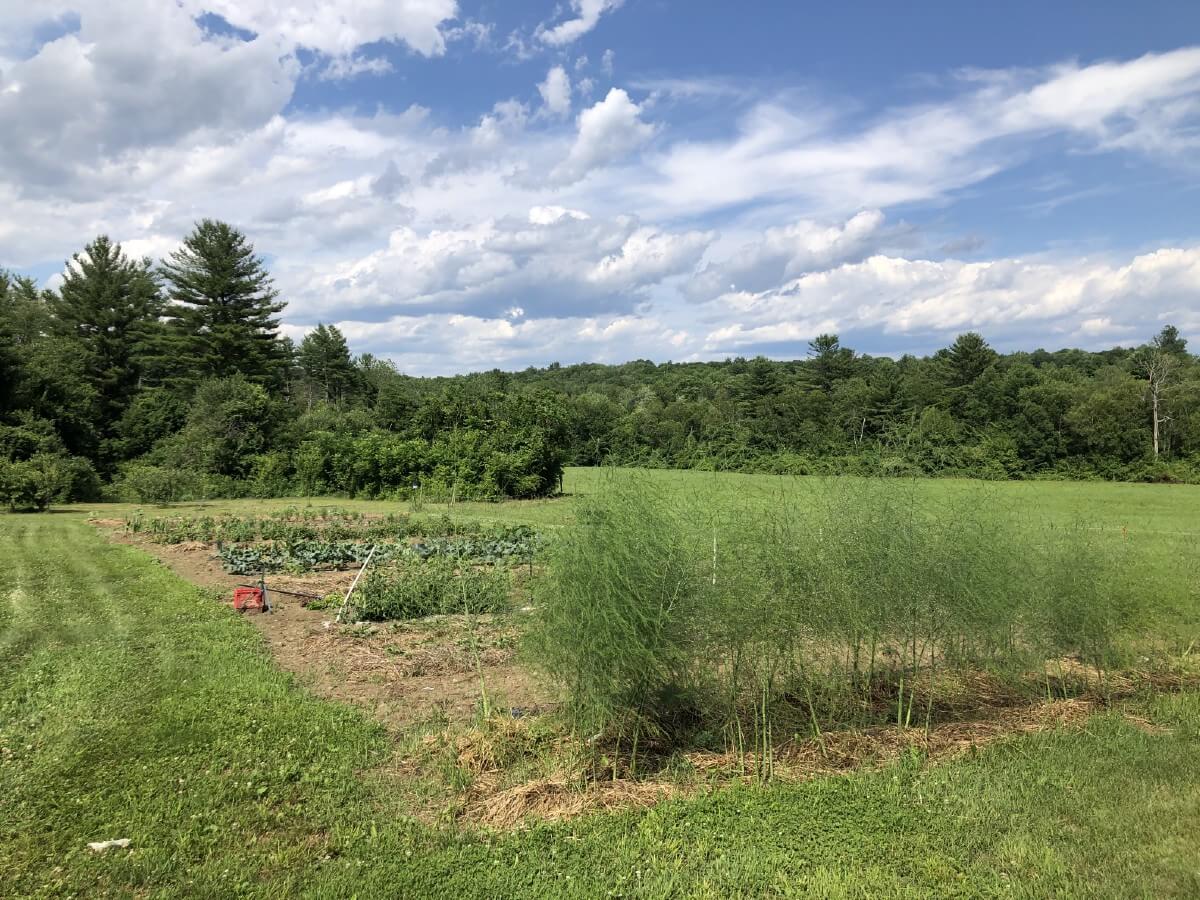
It is important to know when to stop harvesting your asparagus so that the plants remain strong and productive. While the number of weeks you can harvest is a good guideline, it is more important to follow the signals of the plant. There are a couple of simple signs to look for:
- Stop picking asparagus when spears are smaller than the diameter of a pencil.
- Do not pick spears that are smaller than ⅜ of an inch.
Note that spears of giant cultivars will probably not get as small as ⅜ of an inch—rely more on the other signs for those varieties.
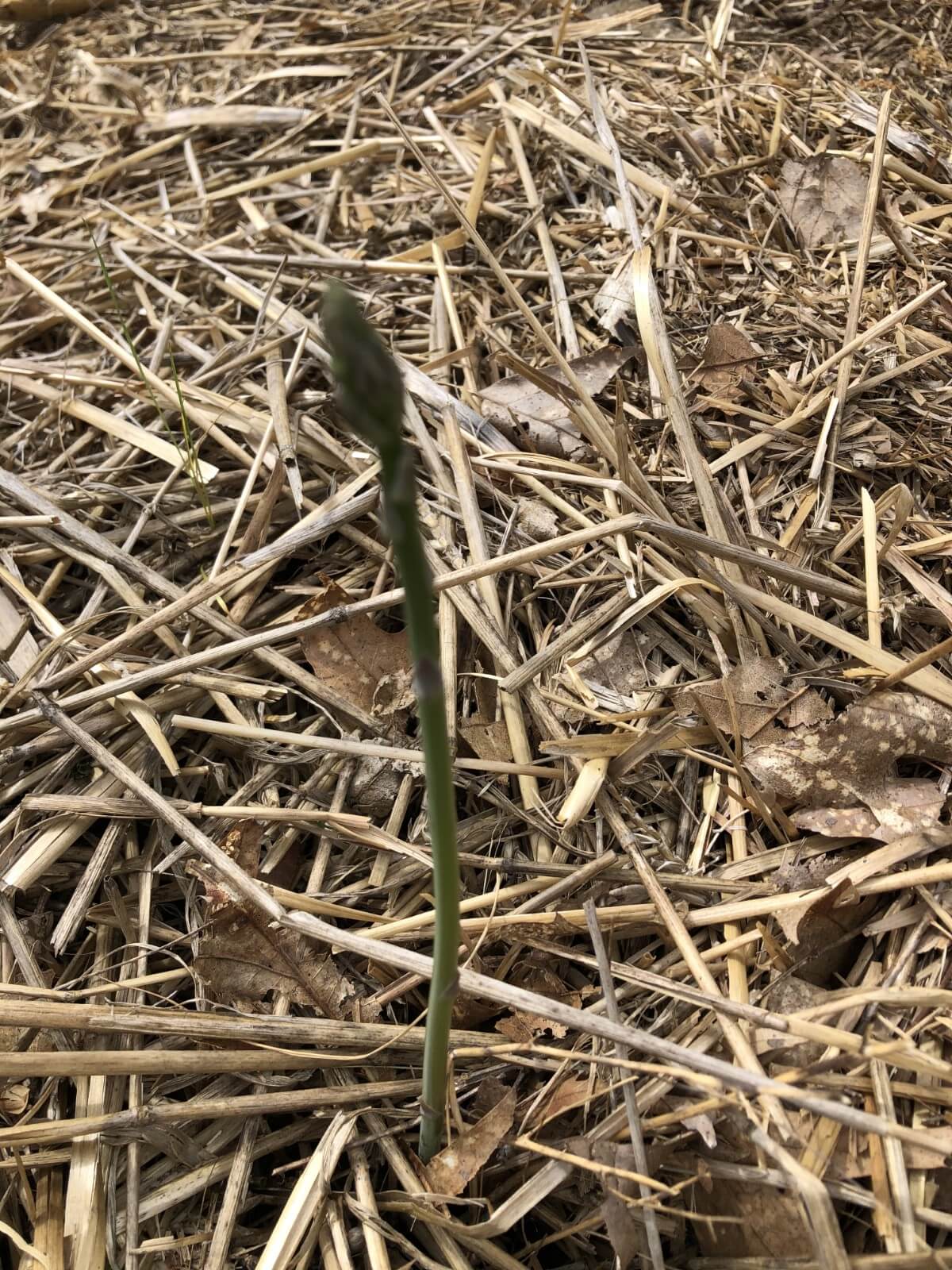
Slow or stop your harvest when the plants slow down in production—when you start getting fewer new emerging spears. Do note that asparagus responds quickly to temperature changes—a few days of cool temperatures is apt to slow production even early in the season and it may pick up again when the weather returns to warmer temps. Monitor your patch and use your judgment if it is still early in the season.
Never pick from a plant that does not have at least two more spears or buds starting to come up. This will ensure that there will be enough spears left to grow to full-sized plants to provide photosynthesis and food for the plants for the rest of the season.
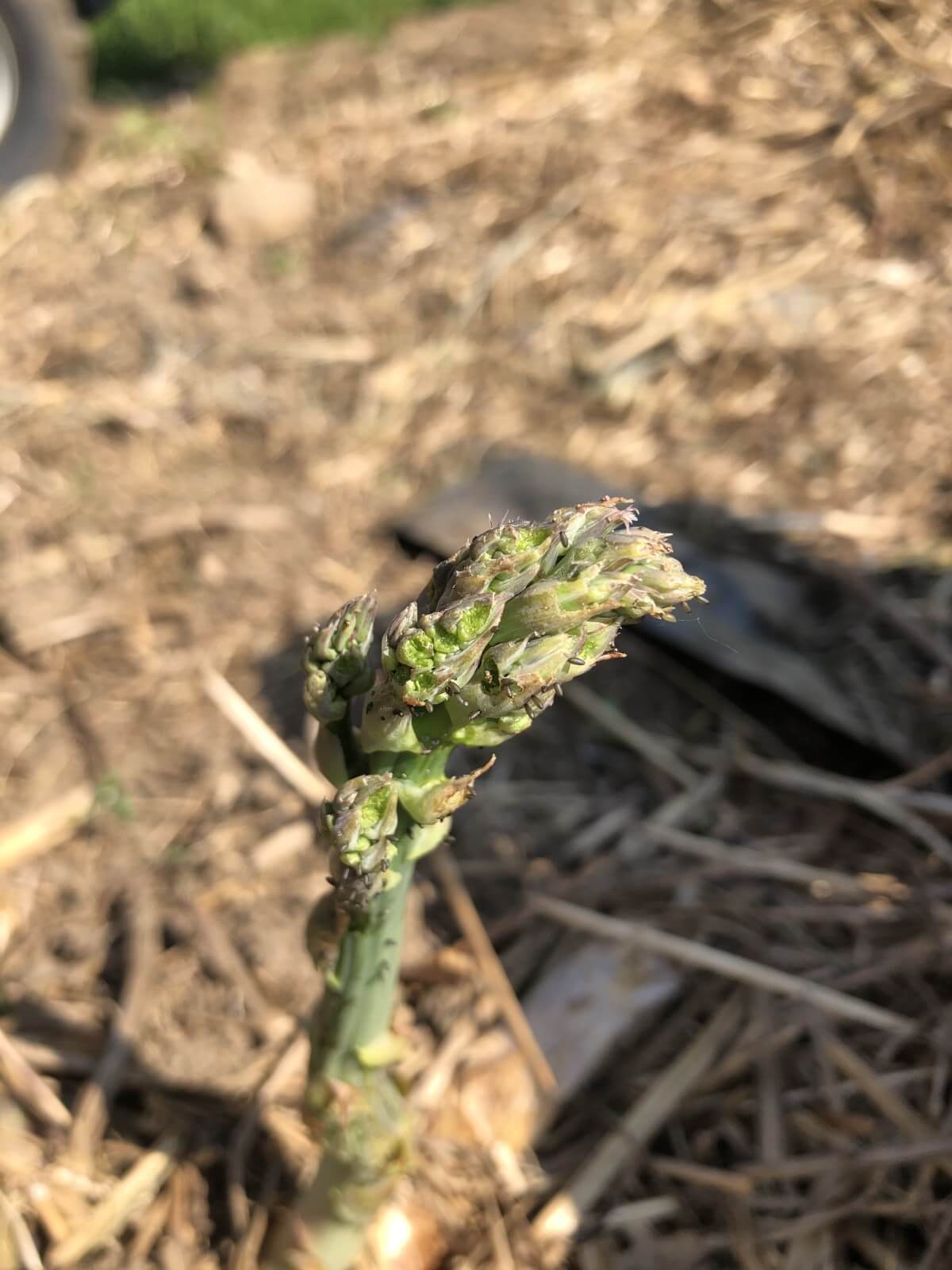
Stop harvesting when the heads of the spears open. You will find that later in the season when temperatures are more regularly in the high range, this will happen quickly—often even when the spears are under 10 inches tall. This is a sign that the season is over and this year’s harvest should end. (Additionally, spears become fibrous and woody once the heads begin to open, so they are no longer of good eating quality).
Follow these few rules for when to stop picking your asparagus and you’ll find your bed is easy to maintain and remains productive for many years.
How Should I Store My Cut Asparagus for Fresh Use?
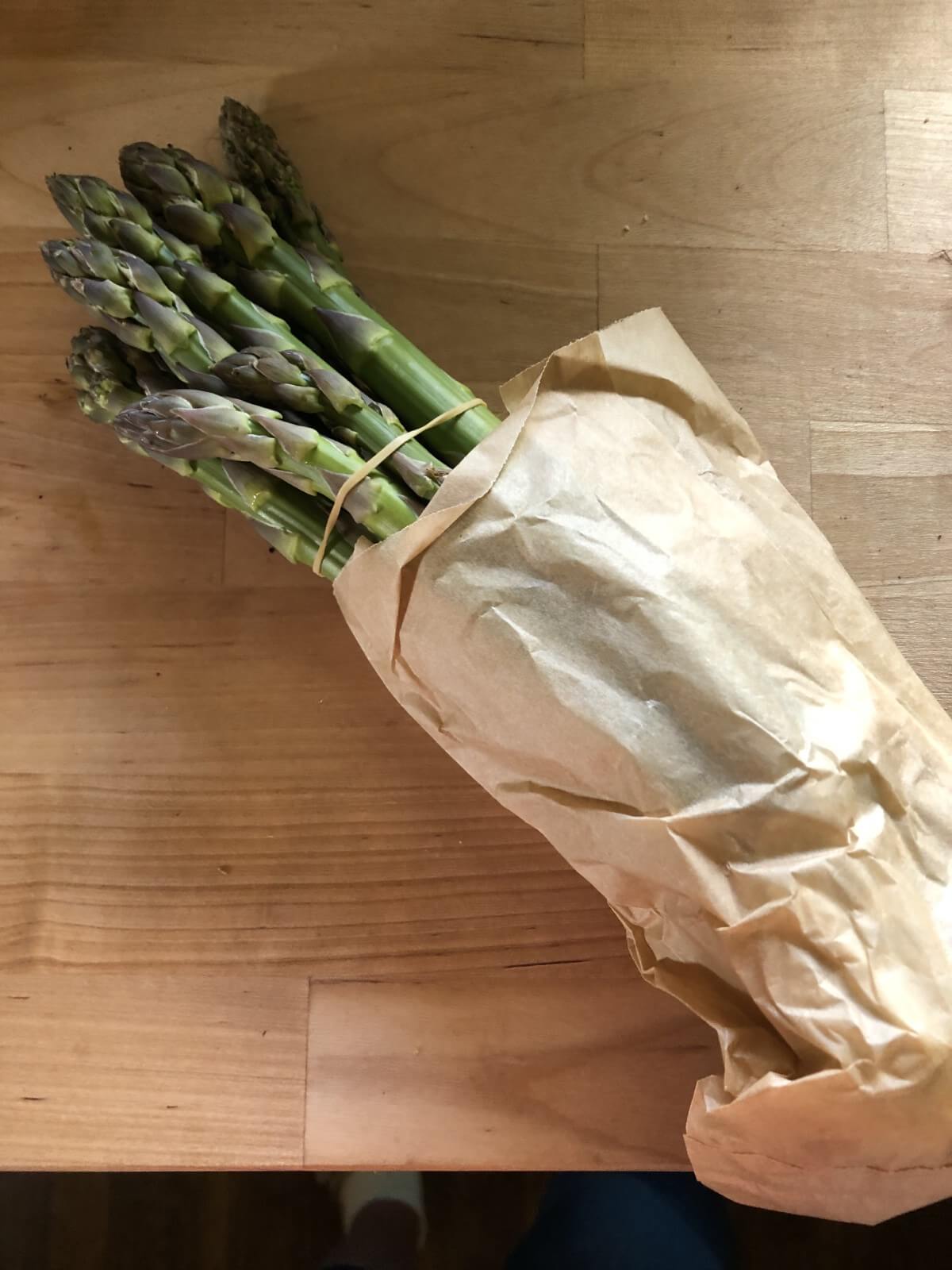
Asparagus is not a particularly long keeper as a fresh vegetable. It begins to deteriorate quickly once picked. When asparagus is picked it begins to lose its sugars and becomes more fibrous and woodier, starting from the picked end up—so quick handling will not only preserve its quality, but it will also preserve the amount of usable vegetable.
Bring your fresh-picked asparagus inside to cool off immediately after harvesting, then prep it and store it until you are ready to use it. For fresh storage, you want to keep the spears moist by providing them with a water source. This will keep them fresh and crisp for several days until ready to eat.
How to store fresh asparagus:
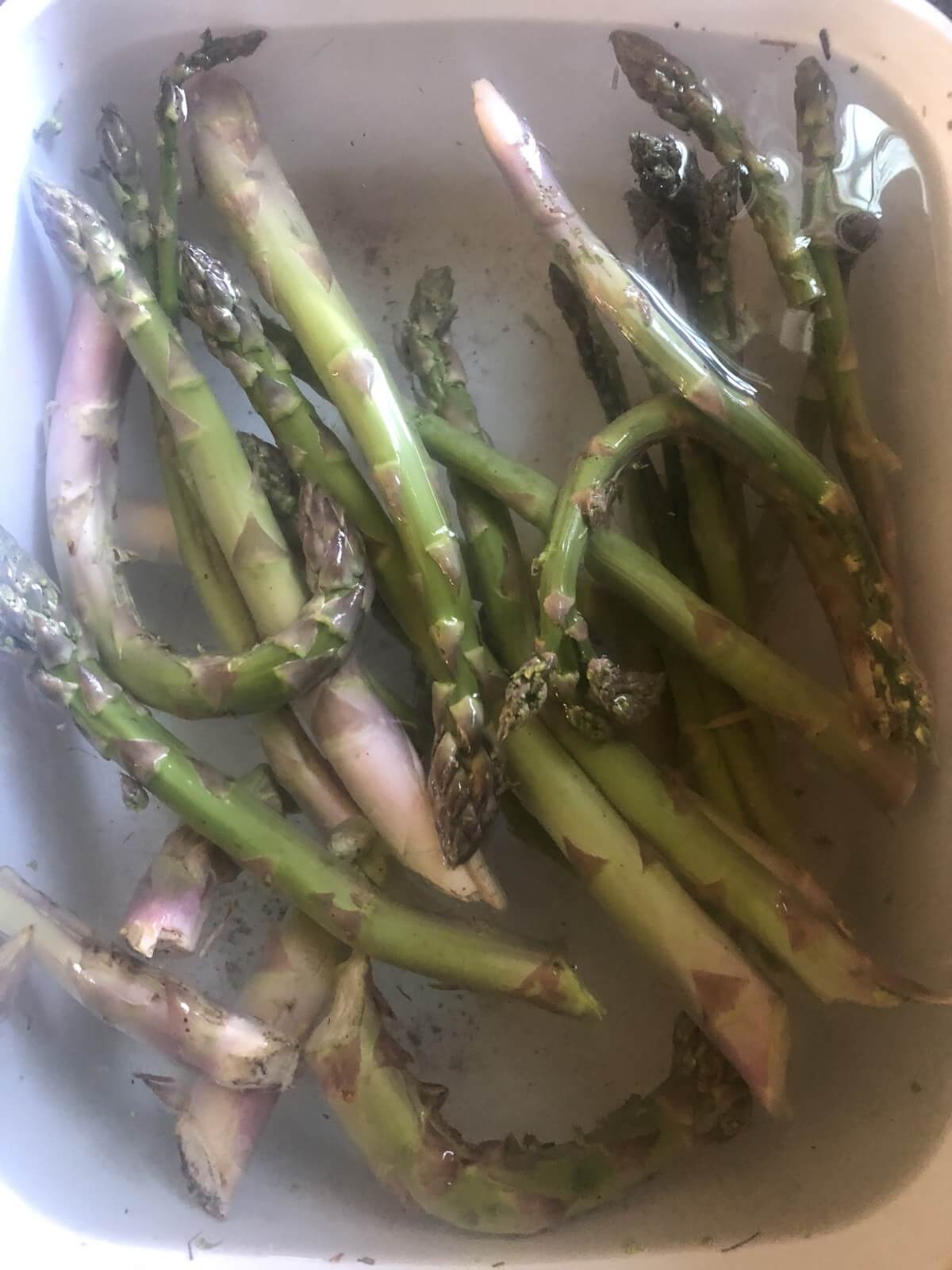
Plunge fresh-picked asparagus into a basin of ice water immediately after bringing it in from the garden. This removes the heat and halts the breakdown. Drain, pat dry with a towel, then store as follows.
If you are not using your asparagus right away, store it in the refrigerator.
One way to keep spears moist is to place them in a canning jar or container (one with some weight that will not tip). Put about an inch of water in the bottom, then place the entire container in the refrigerator.
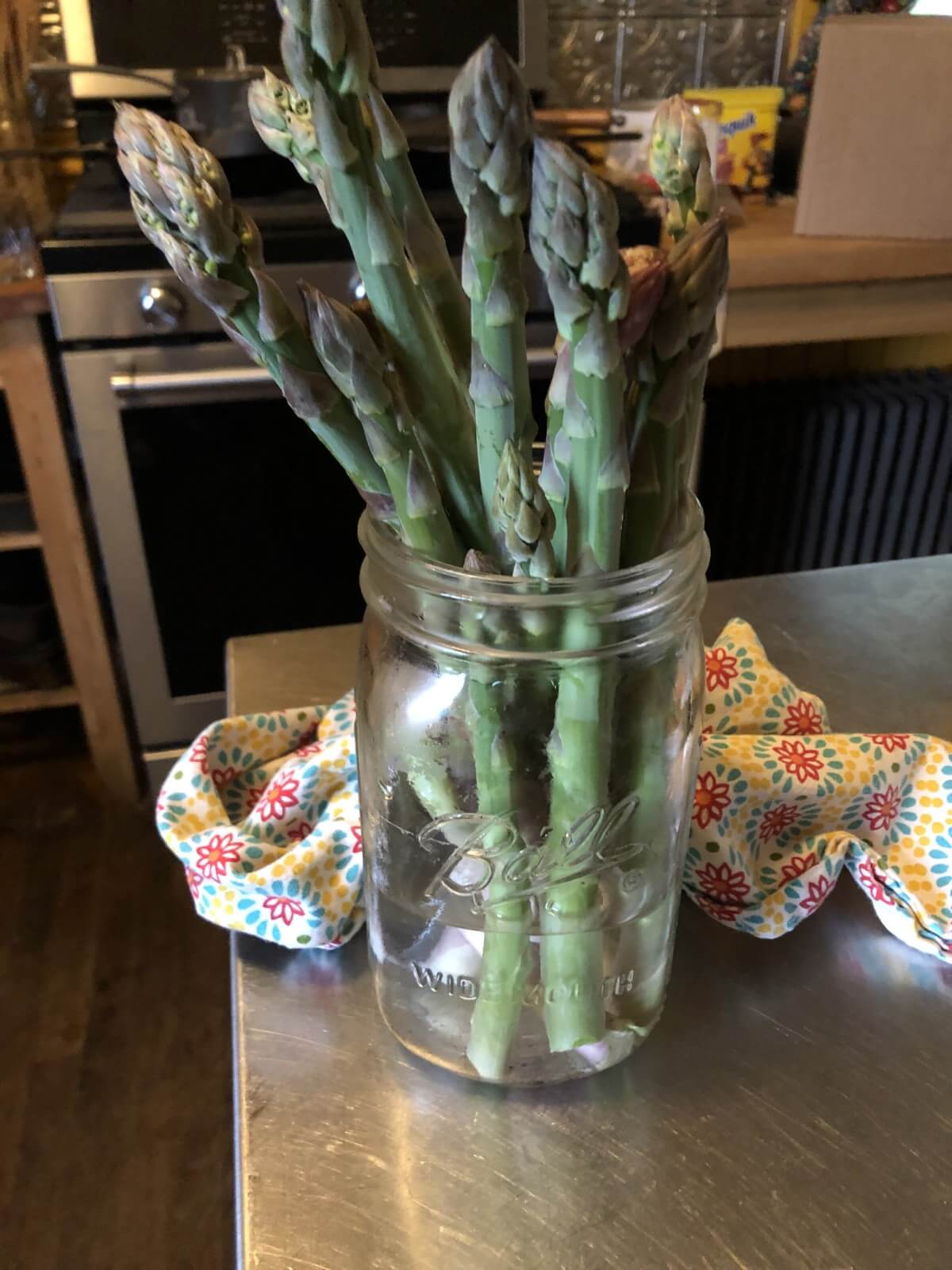
Another option is to wrap the cut ends of the spears with a damp paper towel, then place the bunch in a plastic storage bag. DO NOT close the bag. Leave it open for gases to escape. Trapped gases in closed storage bags speed breakdown and create spoilage.
Homegrown asparagus can be kept for up to three weeks in the refrigerator but is at its highest quality if used or preserved within the first five to seven days.
How To Use Fresh Asparagus
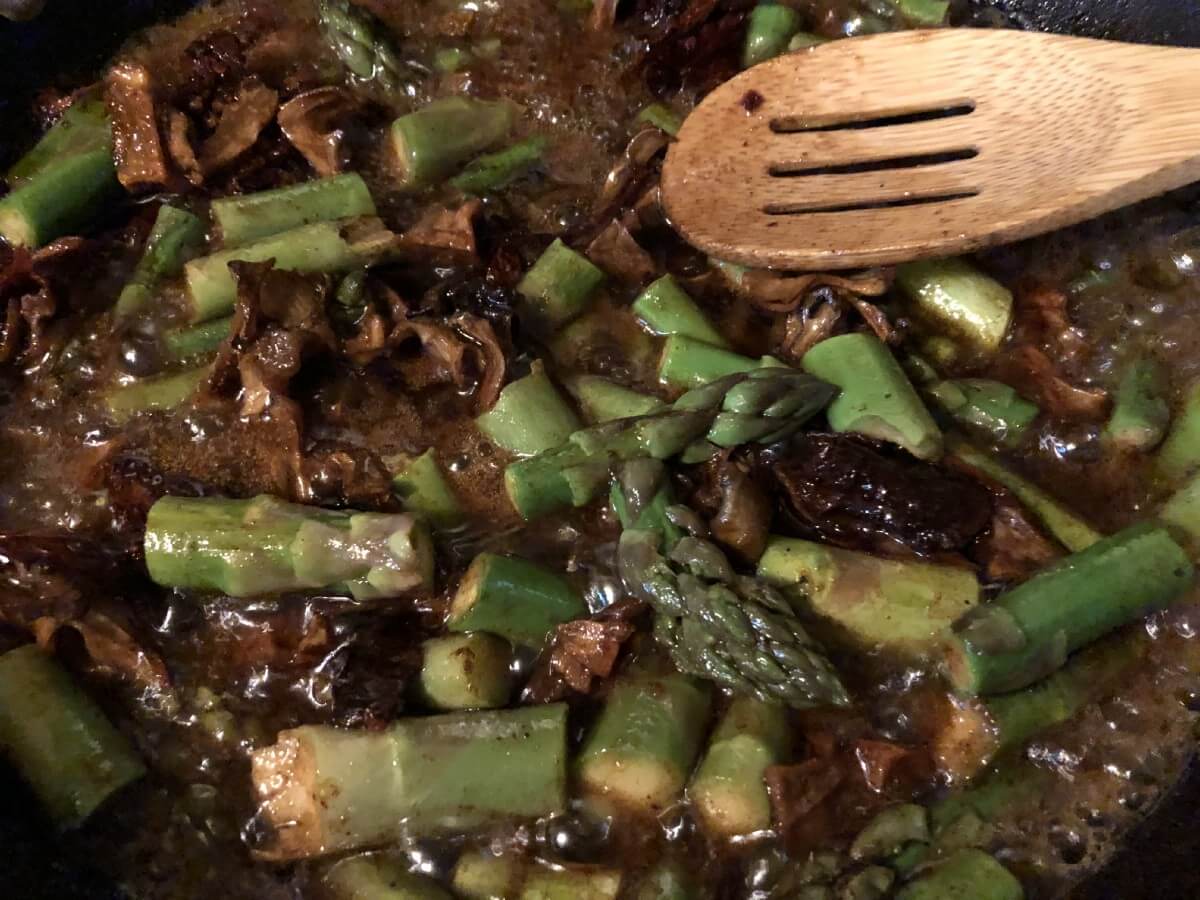
Steamed is the obvious and most common choice, but there are many, many ways to cook with fresh asparagus. Try it tossed with olive oil and sea salt then roasted or grilled just until crisp-tender. It is also a delicious addition to stir-fries, pasta, and casseroles. For a light summer, meal try cream of asparagus soup —simple and delicious!
Can Asparagus Be Preserved for Eating Out of Season?
There are many ways to preserve fresh asparagus for use in the off-season. It can be preserved in one- to two-inch pieces or as whole spears.
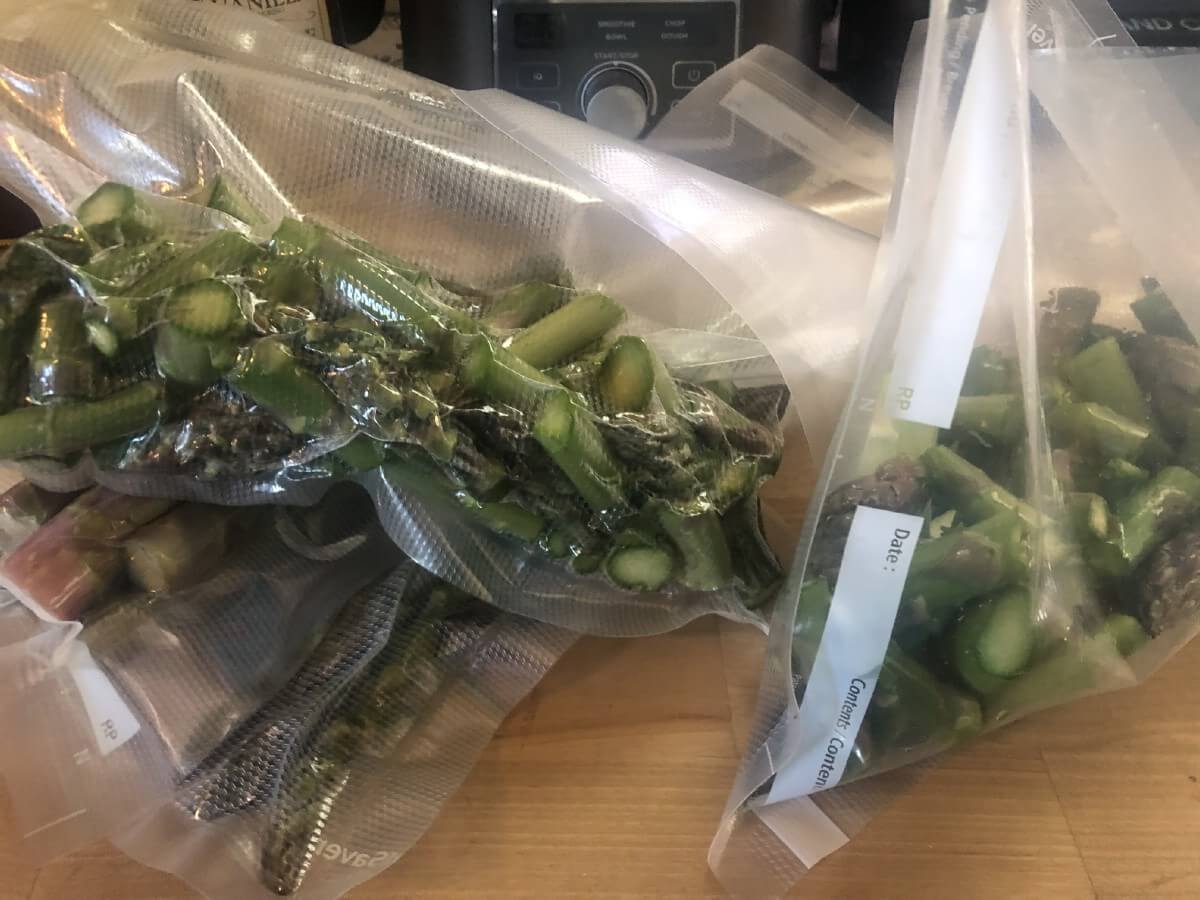
Asparagus is easy to freeze. It can also be canned, pickled, or dehydrated (dried). Preserved asparagus (especially fresh-frozen) can be used in most of the ways that you would use fresh asparagus, with little loss to taste and texture. It is especially good steamed, in stir-fry dishes, tossed with pasta, and in casseroles. When using preserved asparagus in cooking, cook only until heated through for best taste and texture.
Properly harvested, well-handled, and well-preserved, asparagus is a delicious and highly nutritious crop. A well-maintained bed can easily provide you with hundreds of pounds of produce over its lifetime.

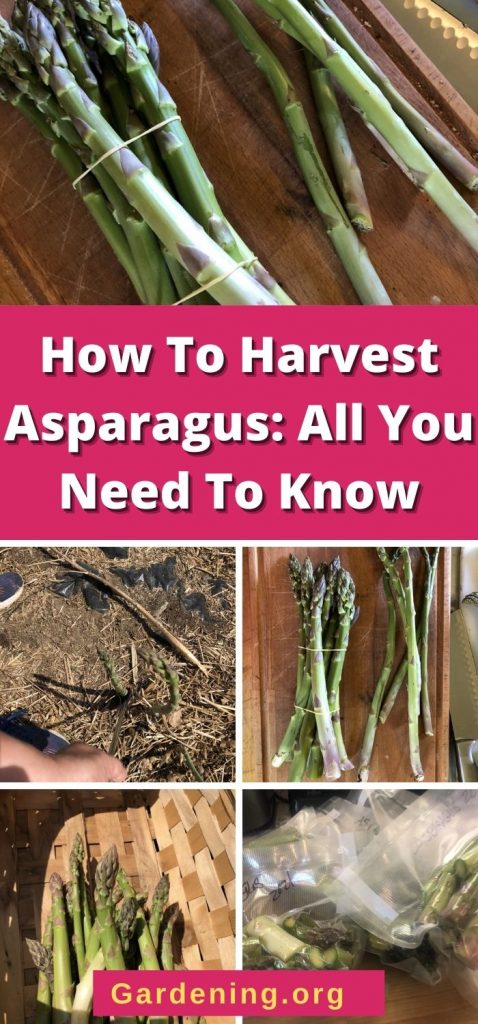
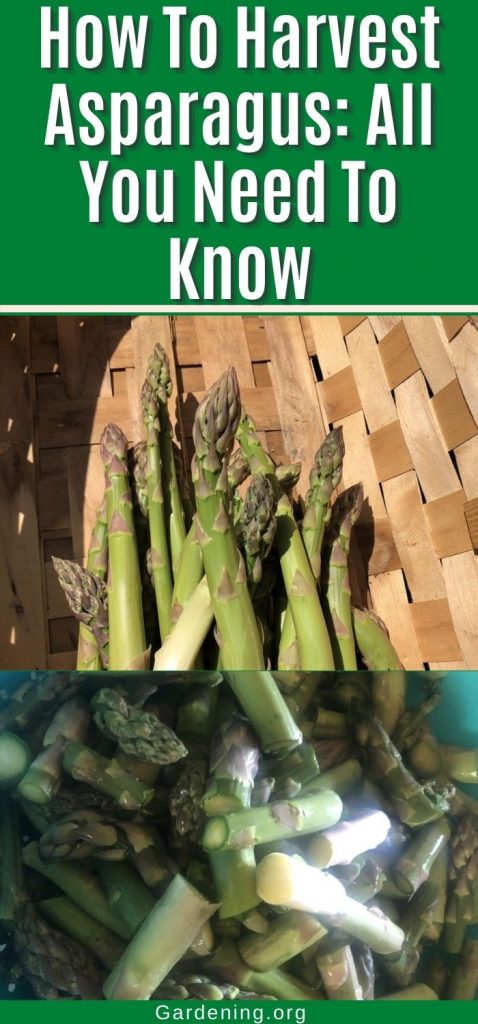

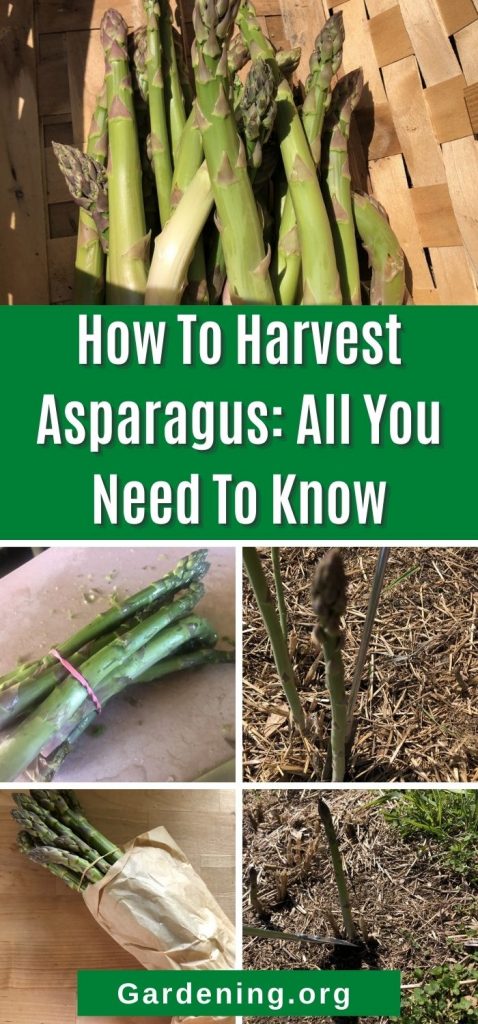


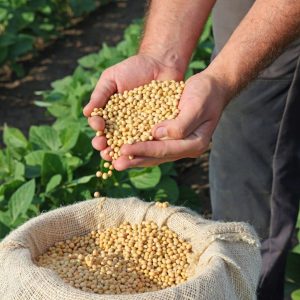
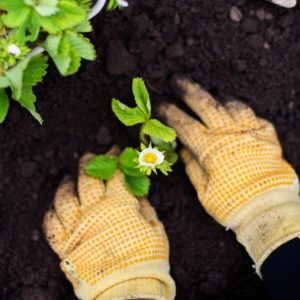
Kathy Oppliger
Great article. Thanks